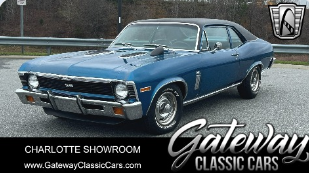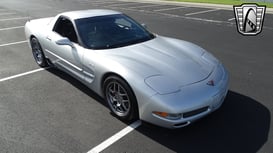Over the last several years, the classic car market has been increasingly mirroring the art market. Even with the global economy in a downward trend, there continues to be a large portion of wealth hunting down a limited number of classic vehicles. For automotive enthusiasts, this positive news means the value of classic cars is continuing to rise at a rate better than other tangible collectibles such as coins or stamps.
The cherry on top is you don’t have to be a millionaire to invest. The market for affordable classics is growing significantly. And thanks to manufacturers going electric, modern combustion engine “new” classics are becoming collectible as well.
 With emerging markets in the Middle East and China converging with one of the most popular hobbies in the USA, UK and Europe, the increased demand for classic vehicles will last for years to come. Unlike brand new automobiles that lose value the second they leave the dealer lot, classic cars gain value over time due to rarity, performance, and special attributes. Overall, the value of classic cars increases more than any other type of collectible investments.
With emerging markets in the Middle East and China converging with one of the most popular hobbies in the USA, UK and Europe, the increased demand for classic vehicles will last for years to come. Unlike brand new automobiles that lose value the second they leave the dealer lot, classic cars gain value over time due to rarity, performance, and special attributes. Overall, the value of classic cars increases more than any other type of collectible investments.
Another factor driving the classic car market upwards are millennials born between 1981 and 1996. Current studies have shown that they are more likely to buy a classic car than their parents’ generation. This demographic of consumers has grown up interested in cars and have now reached a stage of life where they have the buying power to afford them. Millennials are interested in cars from the 1980s/1990s that have updated amenities and can be taken on the highway and used as daily drivers. The trend also has the potential to drive up the value of vehicles. This includes models that may have been considered ‘ugly ducklings’ when released but now have a new audience that appreciates their uniqueness.
When it comes to investing in cars, the basic rule of thumb is: If teenagers had the vehicle’s picture taped to their wall, you are on the right path. Once those same teenagers grow up and earn an income, they want to purchase items that made them happy in their youth. Which is why classic cars are incredibly similar to the art market. Both evoke emotions and are objects of desire. And they are both used as symbols of style, status, and taste.
The classic car market also mirrors the art market financially. A classic car is a work of art that can be enjoyed aesthetically as well as a currency hedge that can be transported to countries with favorable exchange rates. And just as it is in the art world, the more authentic the car, the more valuable it becomes. Top-tier car collectors prize originality and preservation over restoration.
What to look for when investing in a classic car-
Exclusivity: How many were built? Rare?
Car Condition: Restored? Original? Has it been maintained well?
Originality: Restomod? Original vehicles w/ no modifications, fetch greater price-tags
Maintenance Costs: How much will it cost to maintain the vehicle? Are parts easily replaceable?
Price when new: What did the original owner pay for the car?
Cult following: How popular is the car with enthusiasts and investors?
Historical Importance: Did the vehicle pioneer new technology or raise the bar for consumer expectations? Is it rare and beautiful? Is there a racing history? Respected Designer or Builder? Celebrity ownership?
The word provenance has now become familiar among car collectors since automobiles, like art can be forged, making blue-chip cars more valuable. The more documents a seller can provide with the car, the more satisfied the buyer will be. Just like the art world, automobile collectors want to know the vehicle’s story in full, including ownership history, awards won, races ran and clear proof that the drivetrain, body, parts or even the paint are original to it. The more information that can be provided the more assurance prospective owners have and the more money they are willing to pay.
The greatest difference between investing in classic cars and art is that vehicles can move. Functionality and performance are the biggest advantage to investing in a classic car. Being able to show how a car accelerates, sounds and moves is definitive, concrete, and quantifiable. It is the reason why vehicles with successful motorsport pedigrees carry so much weight in the automotive collector world. Having a race record especially a winning one, is indisputable proof of a vehicle’s performance.

Also, collectors can engage with the car community in ways owners of art are unable to. Unlike art that can be locked away in climate-controlled storage, an automobile needs to be exercised with movement to prevent deterioration. Car collectors can participate in car shows, vintage races, rallies, tours, cars & coffee and concurs events as well as be able to take their prized possession for a drive on a beautiful day. Above all, classic cars can do what no piece of art will ever-help create memorable moments and adoration every time you take it out for a drive.
If you are looking to begin investing or enhance your current collection, Gateway Classic Cars has two different platforms available to buy your next vehicle. We have a purchase now option with over 3,500 vehicles in our inventory (https://www.gatewayclassiccars.com/inventory) as well as our new auction platform at Gateway Classic Auctions (https://www.gatewayclassiccars.com/auctions) that features 80-120 vehicle lots each week. For more information contact us at (866) 395-5861 or check out our website.

Comments